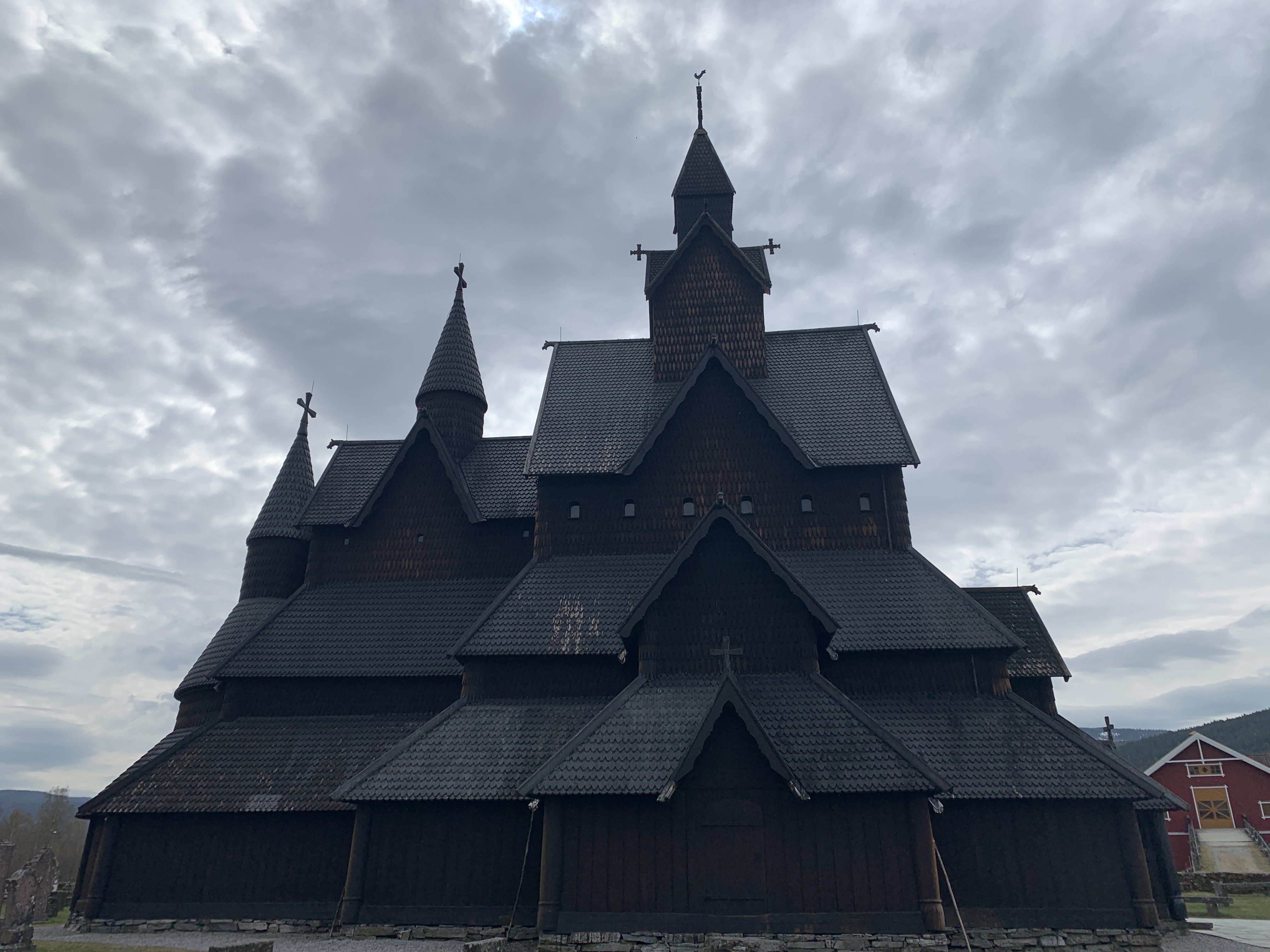
Exploring Norway

In this blog post, Resident Artisan Nate White shares about the first part of his travels through Scandinavia, including feeling awe while exploring Norway's stave churches and the Norwegian Folk Museum.
Hello from Stockholm! As a part of my residency in the Artisan Development Program, I’m on a trip across Scandinavia and a bit beyond. My trip started in Copenhagen where I spent my first few days visiting an old friend. I was very thankful to have a place to stay for a bit and kick my jet lag. From there I headed to Oslo for a week. A big part of my visit there was seeing some stave churches, which are medieval churches that were built between 1150 and 1350. They get their name from the type of post and lintel timber-frame construction that was used to build them.
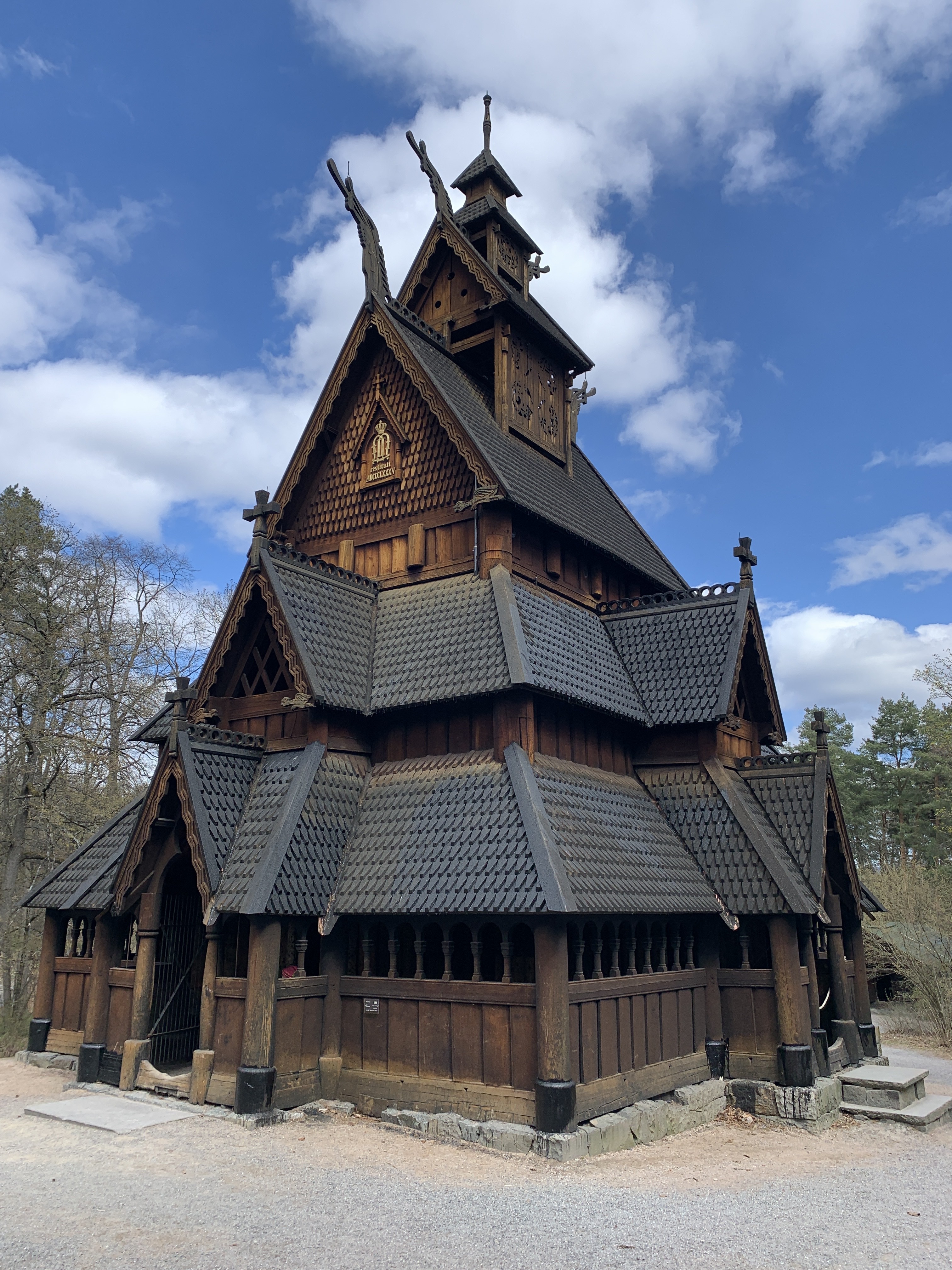
Gol Stave Church
Stave construction predates log building, and its also theorized that stave structures were used in pre-Christian, pagan sacred places. At one point, it was estimated that there were around 2,000 stave churches across Scandinavia, but now only around 30 remain, most of them being in Norway. The churches themselves are breathtaking. They are covered with pine tar which turns them a dark, ashen color, and when I visited the Heddal Stave Church, it was in the process of being re-tarred.
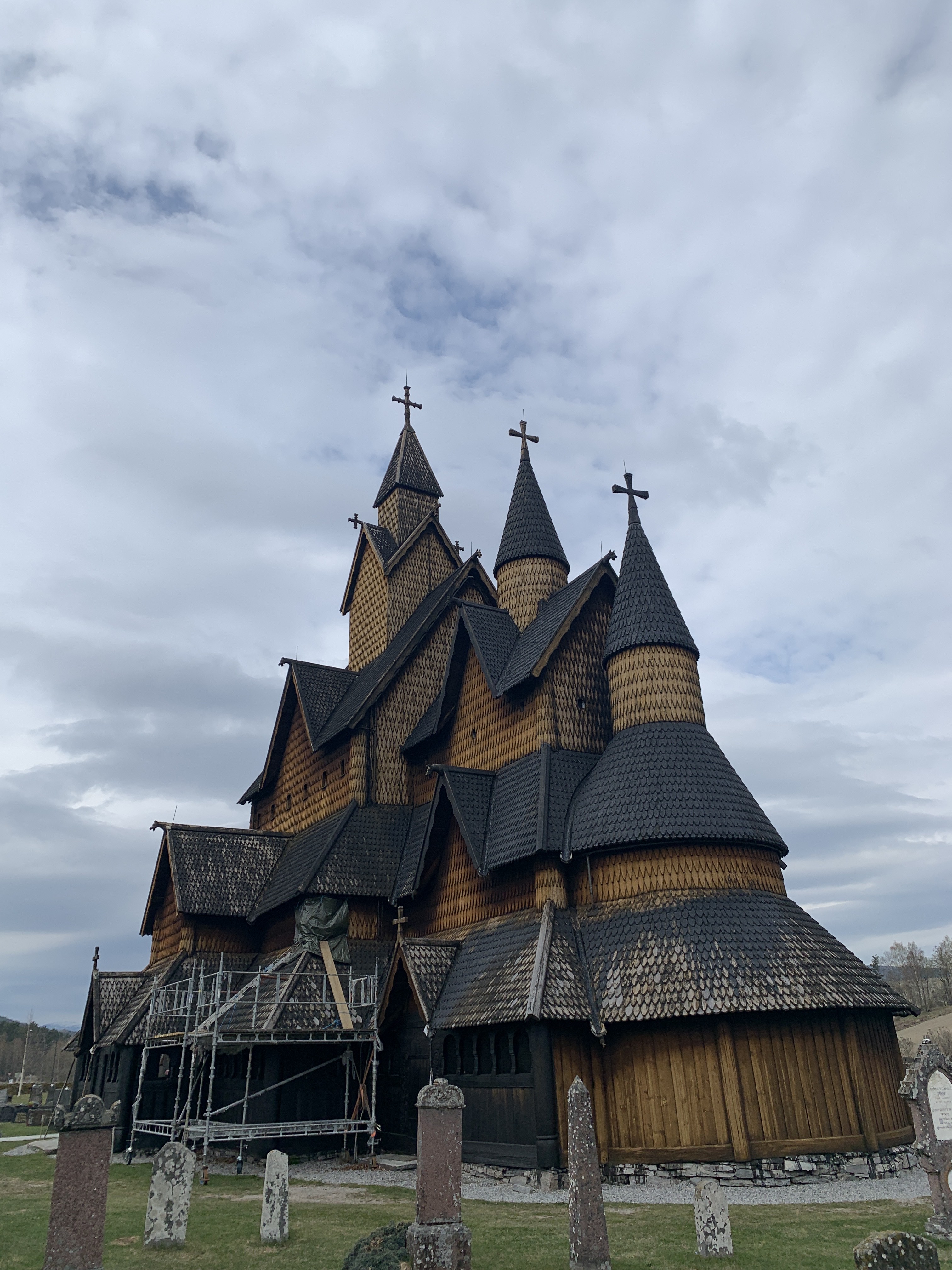
Heddal Stave Church being retarred
Norway has some really strict laws around its historic buildings, and they all must be repaired and maintained using traditional methods and materials. Beyond their stark and ominous look, I’m drawn to the stave churches because a lot of the interiors have beautiful relief carvings around the portals, entryways, and pretty much any component you can think of, which I was really grateful to finally see in person.
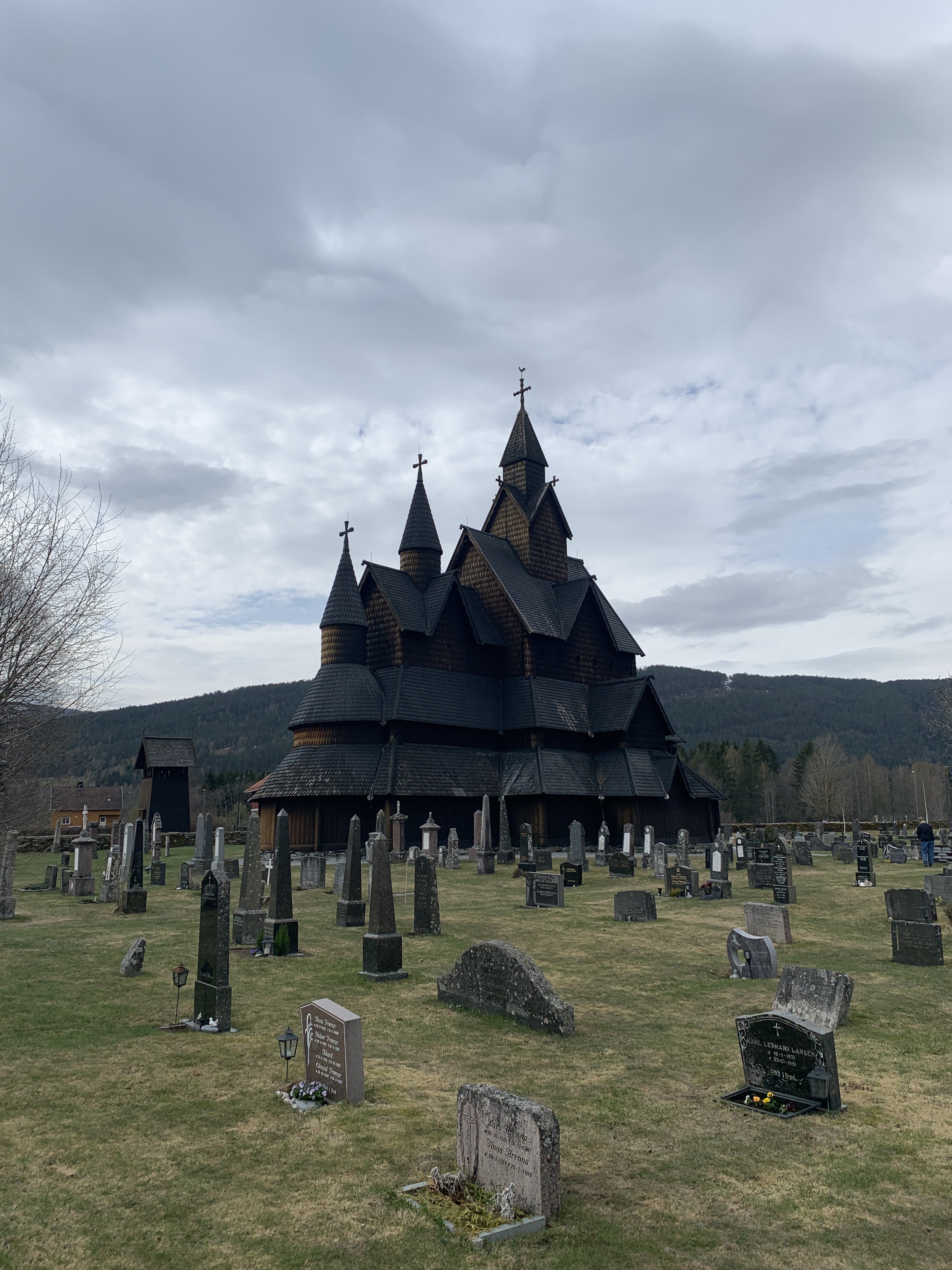
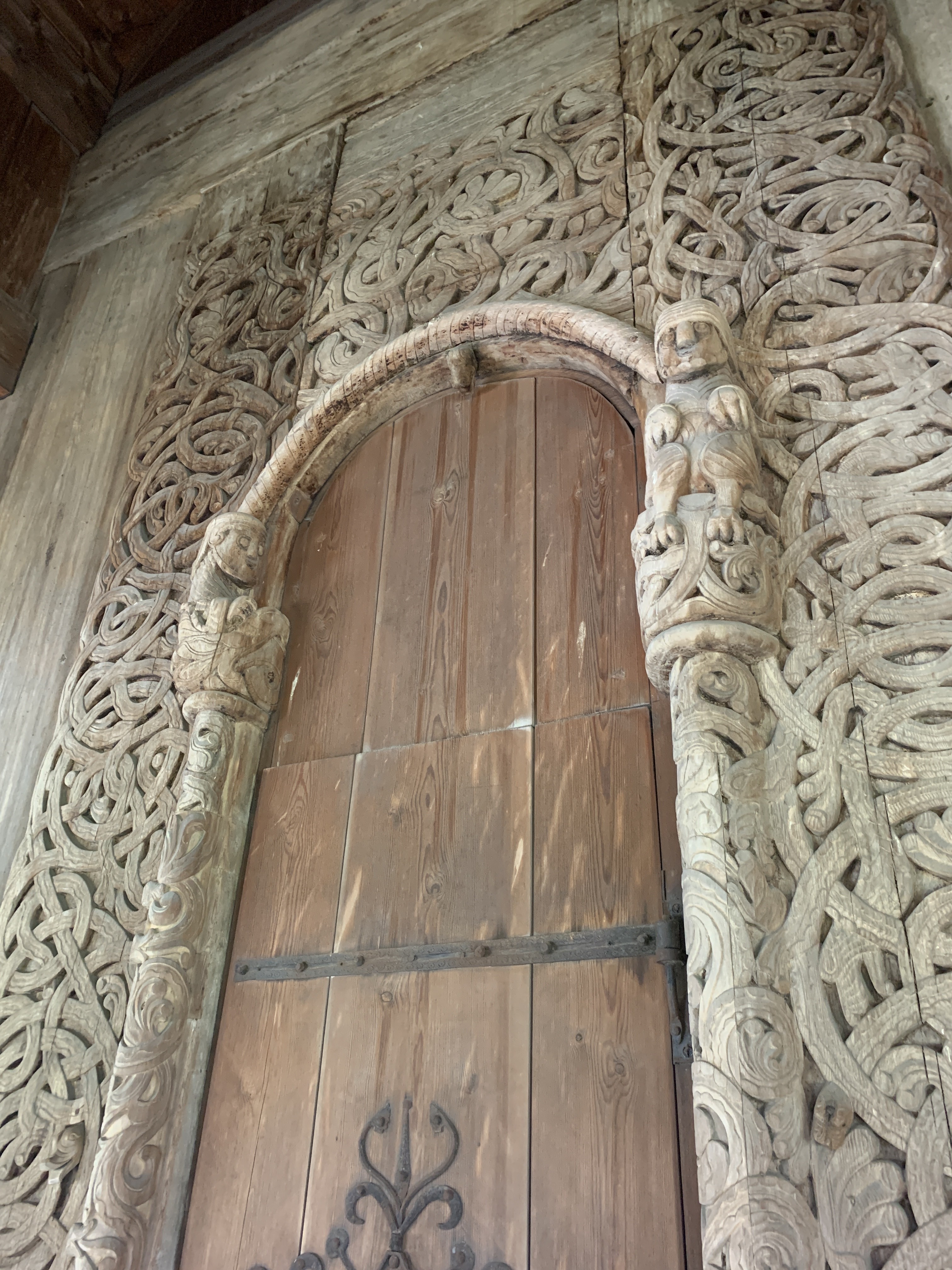
Relief carvings around a door
The Church is also surrounded by a cemetery, which was a bonus for me because I like looking at old tombstones for patterns and relief carvings to incorporate into my work.
The Gol Stave Church was reconstructed in Bygdøy in Oslo, and is a part of the Norwegian Folk Museum, which I also visited during my stay in Norway. In addition to the church, the folk museum featured many artifacts and samples of traditional craft. I was most excited to see all of their ale bowls. Since I learned how to turn I’ve made many ale bowls, mostly copying forms from pictures off of museum websites. Norway and Sweden both have done a phenomenal job of digitizing a lot of their museum collections, and it was so great to see some of these objects in person that I have studied and copied for so long.
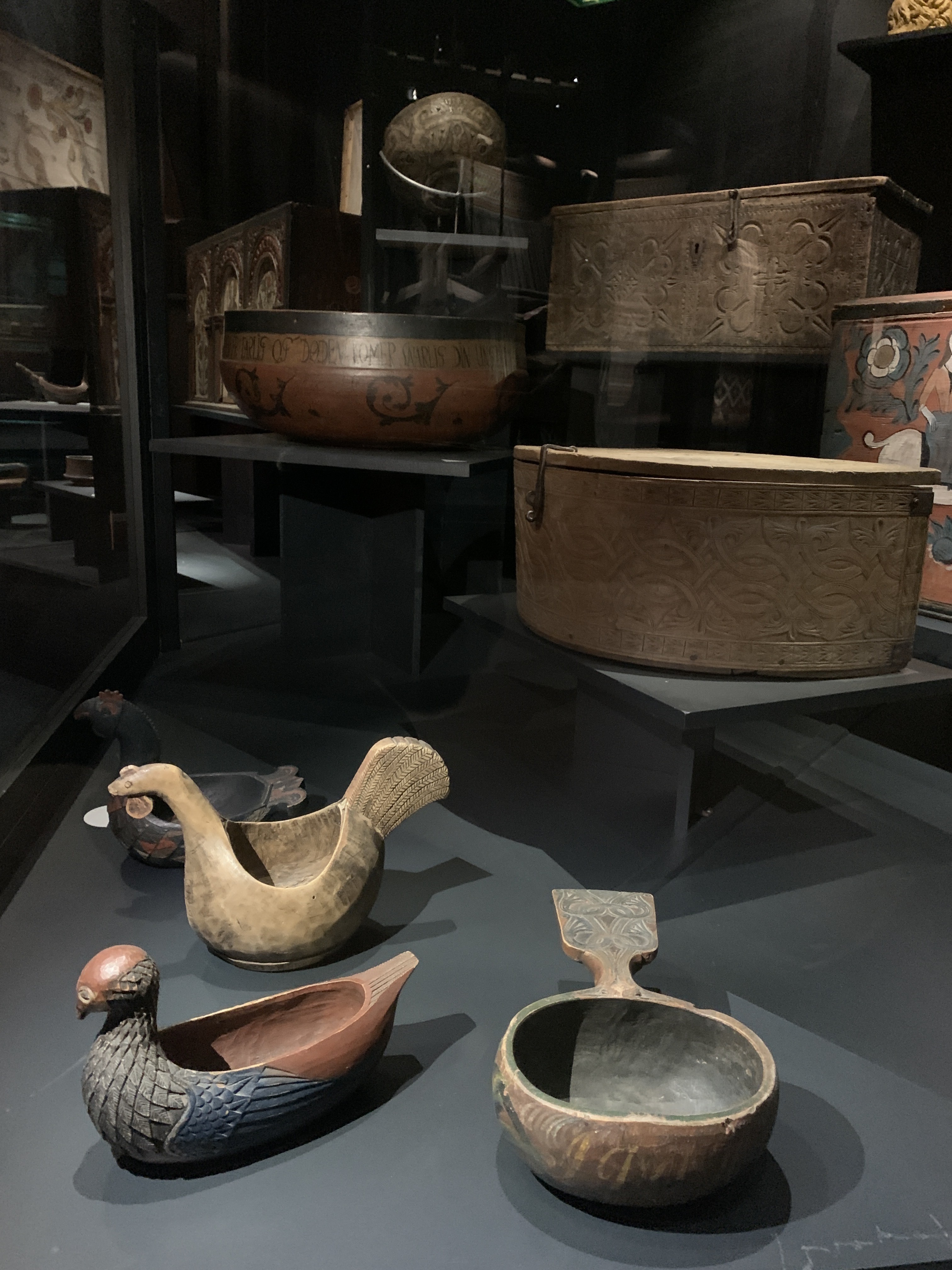 ølfugl/ale birds
ølfugl/ale birds
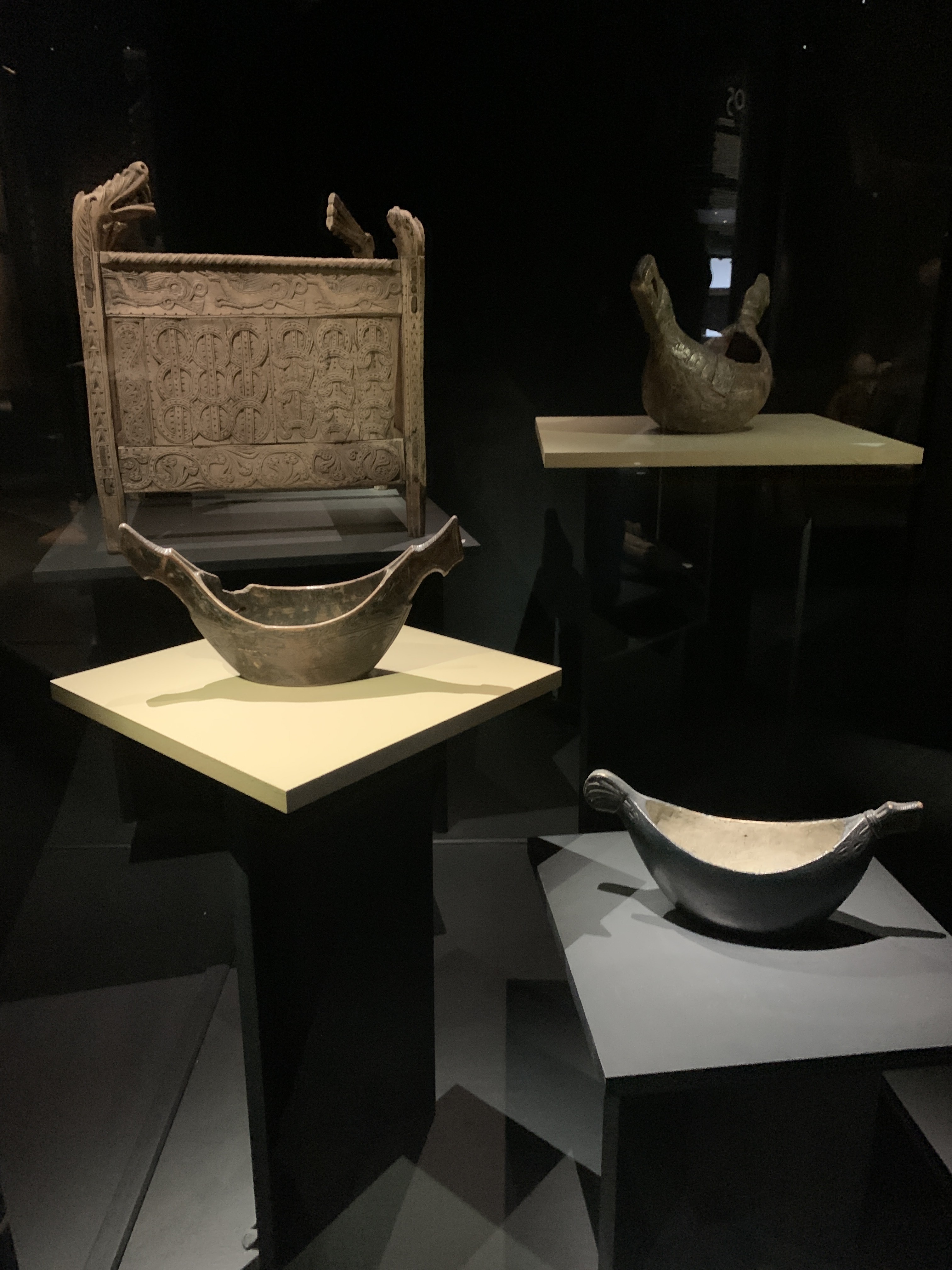
ølbolle/ale bowls
It reminded me of a trip I had taken to Spain. It was before I had a smartphone and didn’t really know what I was doing. I’ve always loved museums, so one day I visited the Museo Del Prado on a whim. I remember turning the corner to where Goya’s Black Paintings were on display and I froze. I was totally caught off guard by these paintings I’d loved for so long and all of a sudden they were right in front of me. Plus, they were way bigger compared to my Dover Books collection. There is just something about seeing these objects and places in person. I remember thinking to myself about how amazing it was to stand in front of those paintings just as Goya once had. It was very similar being at the churches and seeing all of the ale bowls on display; just in awe of the time that has passed and all the different people who have moved through and around and been inspired by these all things and places.
